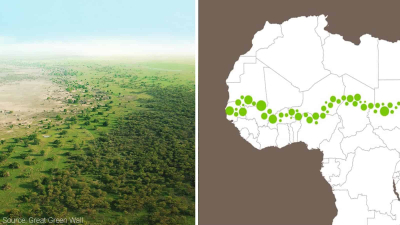Though Libya’s economic future changed with the discovery of petroleum in the late 1950s, today it faces political turmoil.
Ranu Joardar
Libya is an oil-rich desert country, which in the past couple of years has become an important crossover for migrants intending to reach Europe. It is currently ranked 92 among the major economies. Let us know more about this North African country.
History
Historically, Libya was never heavily populated or a power centre. Before the discovery of oil in the late 1950s, the country was seen as poor in natural resources. It was mostly dependent upon foreign aid and imports for the maintenance of its economy.
The discovery of petroleum changed the fate of Libya. The country’s first productive oil well was struck in 1959 at Amal and Zelten, now known as Nasser. The country began exporting oil in 1961.
The first settlers of Libya were the Berbers during the Late Bronze Age, around 1200 BC. The land was then home to the Phoenicians (an ancient Mediterranean civilisation). They established coastal trading posts in the 7th Century BC
The name ‘Libya’ was given by the Greeks when they occupied the eastern part of the country. The country was also once part of the Roman empire.
Around 700 AD, the Arabs came and introduced Islam to the area. From the 16th Century, the country was under the Ottoman Empire until Italy conquered it in 1912. The French and British took over Libya during the Second World War in 1943.
Libya finally gained its independence in 1951. However, it was ruled by monarchs till 1969 when Colonel Muammar Gaddafi overthrew King Idris I.
Gaddafi controlled Libya until the 2011 revolution when he was killed. Despite achieving independence from autocratic rule, the country continues to rebuild its government.
Geography
The fourth-largest country in Africa is mostly a desert and most of its population lives along the coast and its immediate hinterland (region lying inland from a coast). The de facto capital, Tripoli, and Benghazi (second-largest city) are on the coast of the Mediterranean Sea.
Libya is surrounded by the Mediterranean Sea, Tunisia, Algeria, Niger, Chad, Sudan, and Egypt. As the country is part of the Sahara desert (the world’s largest hot desert), the country has no permanent rivers.
To access the water below the desert, the Great Man-Made River was constructed to deliver fresh water to the cities through a network of underground pipelines.
Flora and fauna
As the country’s coastal plains have high precipitation, these regions are home to herbaceous vegetation and annual grasses such as asphodel (a herb of the lily family).
The north of Akhdar mountains is covered with a dense forest of juniper and lentisc. Though the semiarid regions lack vegetation, the most commonly found plants here include saltwort (a plant used in making soda ash), spurge flax (a shrubby plant), goosefoot.
Asida is a popular traditional dish served in Libya during celebrations such as births or Eid. Wormwood, and asphodel.
The country is home to wild animals like desert rodents (desert hare and the jerboa), hyenas, foxes (fennec and the red fox), jackals, skunks, gazelles, and wildcats. Its largest national park, El Kouf National Park, is known for its sand dunes, wetlands, and hilly terrain.
The country’s native birds include wild ringdove, partridge, lark, and prairie hen.
People
About 97% of the country’s population consists of the Berber and Arab ethnic groups. Most Libyans speak Arabic, which is the country’s official language. At the beginning of the 21st Century, the country saw a rise in the number of foreign migrant workers, mainly from sub-Saharan African countries. About 25% population live either in Tripoli or Benghazi and the rest live near desert oases, where they can access water.
The country is famous for its weaving, embroidery, and metal engraving. Traditional Libyan food is a blend of North African. Berber, and Mediterranean cuisines. Couscous, lamb, dates, and olives feature heavily in the Libyan cuisine
Politics
Following independence, Libya was ruled by monarchs. After overthrowing King Idris I in 1969 and suspending the constitution in a military coup, the country turned into an authoritarian state. Till 1977, Libya was ruled by a 12-member Revolutionary Command Council (RCC) with Colonel Gaddafi as secretary-general. Though he resigned from the post in 1979, he continued to be the de facto ruler of the country and head of the revolution until he was killed during the 2011 revolution.
Since 2014, the country has had competing political and military factions fighting for power. Though the two sides signed a permanent ceasefire in 2020, political rivalries continue leaving the country in a turmoil. Currently, the Prime Minister of Libya is Abdul Hamid Dbeibeh, leader of the Government of National Unity (GNU).
Libya Revolt of 2011
On February 15, 2011, anti-government protests were held in Benghazi after the arrest of human rights lawyer Fethi Tarbel. The protesters demanded the resignation of Gaddafi and the release of political prisoners. The protests gained momentum despite the Libyan security forces using lethal force against demonstrators. Soon, international pressure for Gaddafi to step down increased and sanctions against the regime were imposed by the UN Security Council. On October 20, Gaddafi was killed by rebel fighters in his hometown.
Picture Credit : Google




